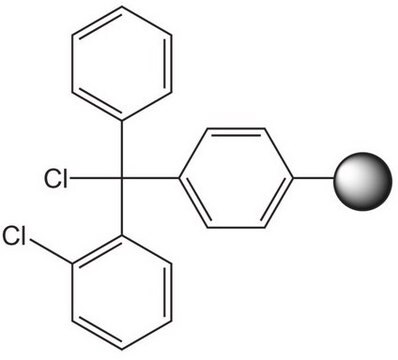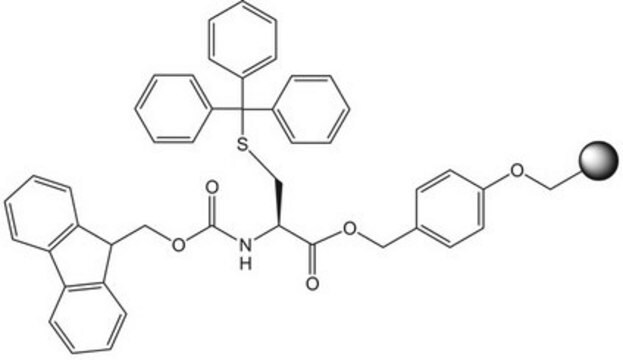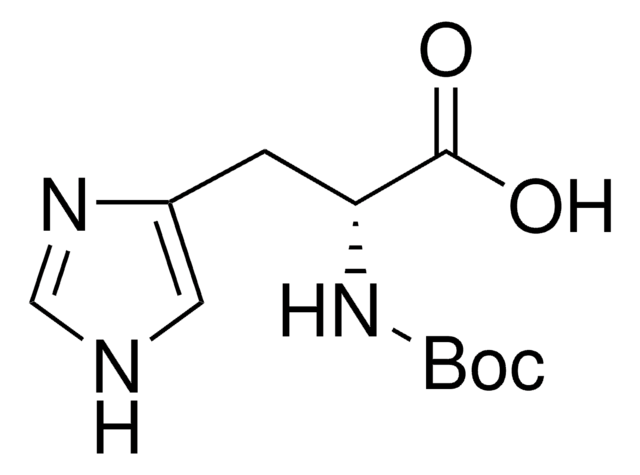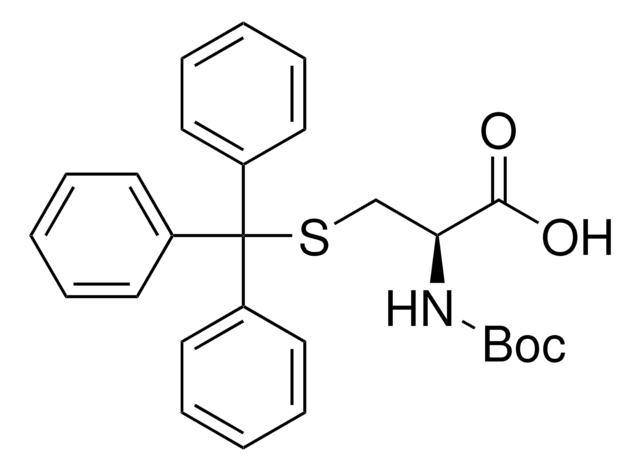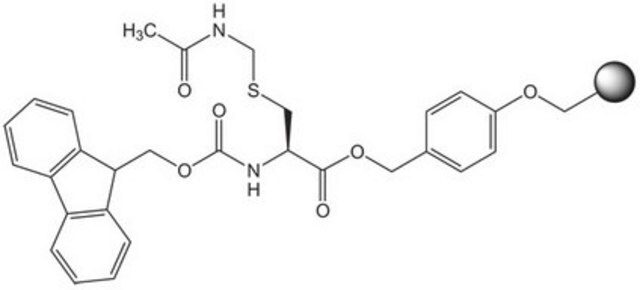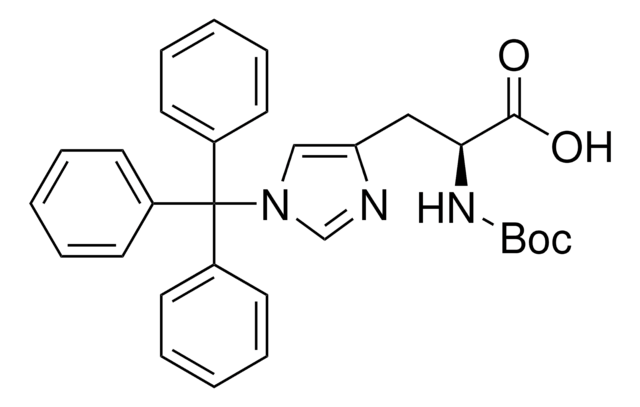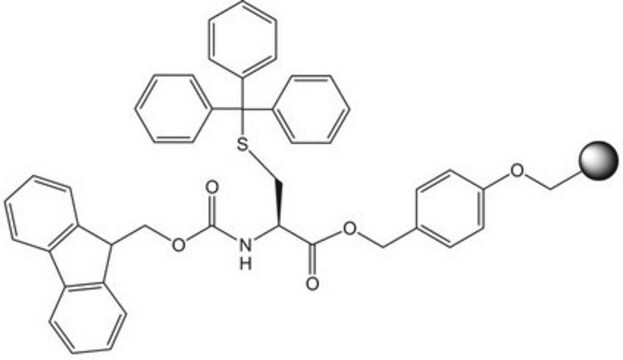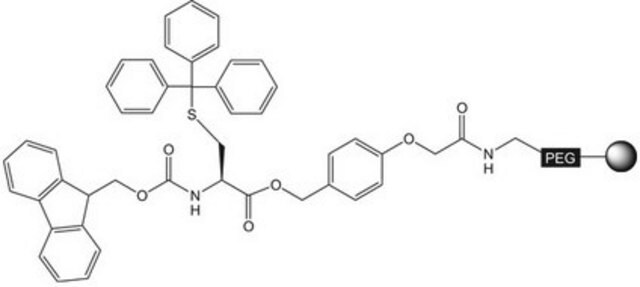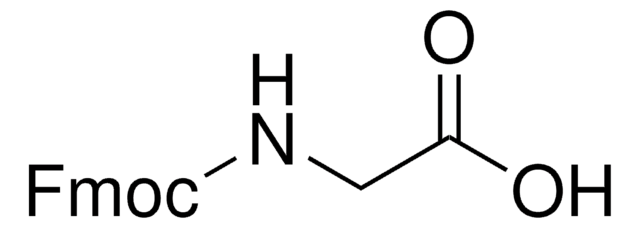18606
Fmoc-Cys(Trt) Wang resin
extent of labeling: ~0.7 mmol/g loading
Synonym(s):
Nα-Fmoc-S-trityl-L-cysteine 4-benzyloxybenzyl ester polymer-bound, PS-PHB-Cys(Trt)-Fmoc
About This Item
Recommended Products
form
powder
Quality Level
reaction suitability
reaction type: Fmoc solid-phase peptide synthesis
extent of labeling
~0.7 mmol/g loading
particle size
37-75 μm
application(s)
peptide synthesis
functional group
Fmoc
storage temp.
2-8°C
Storage Class Code
11 - Combustible Solids
WGK
WGK 3
Flash Point(F)
Not applicable
Flash Point(C)
Not applicable
Personal Protective Equipment
Regulatory Listings
Regulatory Listings are mainly provided for chemical products. Only limited information can be provided here for non-chemical products. No entry means none of the components are listed. It is the user’s obligation to ensure the safe and legal use of the product.
JAN Code
18606-VAR-F:
18606-BULK-F:
18606-1G-F:
Choose from one of the most recent versions:
Already Own This Product?
Find documentation for the products that you have recently purchased in the Document Library.
Customers Also Viewed
Our team of scientists has experience in all areas of research including Life Science, Material Science, Chemical Synthesis, Chromatography, Analytical and many others.
Contact Technical Service